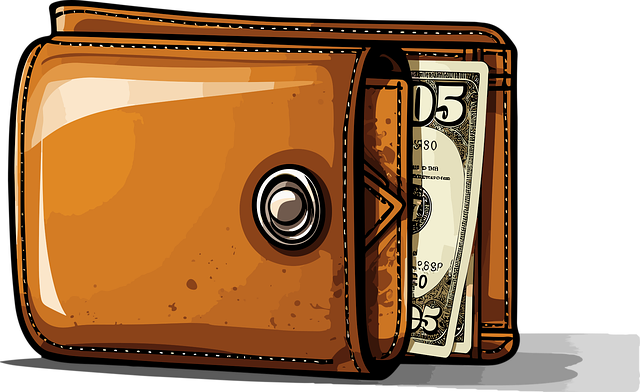The Ultimate Guide to Crypto Wallets
Author: Jameson Richman Expert
Published On: 2025-02-17
Prepared by Jameson Richman and our team of experts with over a decade of experience in cryptocurrency and digital asset analysis. Learn more about us.
In today's rapidly evolving financial landscape, crypto wallets have become a fundamental component of the cryptocurrency ecosystem. Whether you're a seasoned investor or a beginner, understanding crypto wallets is crucial for securely managing your digital assets. This comprehensive guide will explore everything you need to know about crypto wallets, including their types, advantages, how to use them, security measures, and tips for choosing the best wallet for your needs.

What is a Crypto Wallet?
A crypto wallet is a software program or physical device that allows you to store, send, and receive cryptocurrencies. Unlike traditional wallets, which hold physical cash, crypto wallets store digital keys that enable you to access your digital currency on the blockchain. These digital keys consist of a public key, which is similar to your bank account number, and a private key, which is like your ATM PIN. Protecting your private key is essential to safeguarding your cryptocurrencies.
Types of Crypto Wallets
There are several types of crypto wallets, each with its unique features and benefits. Understanding the different types can help you make an informed decision about which wallet is best suited for your needs.
1. Hot Wallets
Hot wallets are connected to the internet, making them convenient for everyday transactions. They come in various forms, including online wallets, mobile wallets, and desktop wallets. While hot wallets are user-friendly and allow for quick access to your funds, they are also more vulnerable to hacks and cyberattacks.
2. Cold Wallets
Cold wallets, on the other hand, are offline storage solutions that provide enhanced security. They include hardware wallets and paper wallets. By keeping your private keys offline, cold wallets minimize the risk of online threats. They are ideal for long-term storage of cryptocurrencies.
3. Hardware Wallets
Hardware wallets are physical devices that store your private keys offline. Popular options include Ledger and Trezor. Since hardware wallets are not connected to the internet, they are considered one of the safest ways to store cryptocurrencies. However, they require an initial investment, and some users may find the setup process complex.
4. Paper Wallets
A paper wallet is a physical document that contains your private and public keys. This option allows you to store your cryptocurrencies completely offline. However, you need to be careful to keep your paper wallet in a safe place, as losing it means losing access to your funds. Printing out your keys only after ensuring that your computer is malware-free is a good practice.
Advantages of Using Crypto Wallets
Investing in cryptocurrencies can be thrilling, but security is paramount. Here are some compelling reasons why using a crypto wallet is advantageous:
1. Enhanced Security
Crypto wallets enhance the security of your digital assets. By utilizing different security features such as two-factor authentication (2FA), biometric verification, and encrypted keys, you're taking significant steps to protect your investments from fraud and theft.
2. Ownership Control
With a crypto wallet, you maintain full control over your funds. Unlike keeping your assets on an exchange, where you depend on their security measures, having your own wallet means that you are not reliant on third-party platforms.
3. Ease of Transactions
Crypto wallets make sending and receiving cryptocurrencies straightforward. You can quickly transfer funds to friends, pay for services, or make investments without needing to use centralized exchanges, which often come with time delays and extra fees.
4. Diversification of Coins
Many wallets support multiple cryptocurrencies, allowing you to combine storage for different assets in one place. This convenience enables you to diversify your portfolio without the hassle of juggling various platforms.

How to Set Up a Crypto Wallet
Setting up a crypto wallet is generally a straightforward process. Here are the steps to follow:
1. Choose the Right Wallet
Your first step is deciding which type of wallet suits your needs best. Consider factors such as security, ease of use, and whether you plan to access your funds regularly or hold them long term.
2. Register or Download
If you opt for a hot wallet, download the application on your device. For hardware wallets, purchase the device from the manufacturer’s official website or authorized retailers, and follow the setup instructions provided.
3. Create a Secure Backup
Once you’ve set up your wallet, you will receive a recovery phrase. Write this down and store it in a secure location. This phrase can help you recover your wallet if you ever lose access.
4. Deposit Cryptocurrency
After backing up your wallet, you can deposit funds by purchasing crypto on exchanges such as Binance or MEXC. You can create your accounts using the following links: Binance or MEXC.
Security Measures for Your Crypto Wallet
While crypto wallets provide enhanced security, there are still measures you need to take to protect your assets. Here are some essential security tips:
1. Enable Two-Factor Authentication
Always enable two-factor authentication on your wallet to add an extra layer of security. This process usually involves a verification code sent to your mobile device or email, ensuring that only you can access your account.
2. Use Strong Passwords
Employ a strong and unique password for your wallet account. Utilizing a mix of uppercase and lowercase letters, numbers, and symbols will make it harder for hackers to gain unauthorized access.
3. Regularly Update Your Software
Whether you use a hot wallet or that hardware wallet, ensure your software is up-to-date. Developers continuously release updates to patch vulnerabilities that hackers could exploit.
4. Be Cautious of Phishing Scams
Be wary of unsolicited emails, messages, or websites that ask for your wallet details. Always double-check the URLs and avoid clicking on unknown links.
Choosing the Right Wallet for You
Choosing an ideal crypto wallet involves several considerations. Here are some factors to ponder:
1. Frequency of Use
Consider how often you will access your cryptocurrency. If you’re planning to make frequent transactions, a hot wallet may be more suitable. On the other hand, if you intend to hold your assets for the long term, a cold wallet may be the better option.
2. Types of Cryptocurrencies Supported
Check which cryptocurrencies the wallet supports. If you plan to hold multiple coins, opt for a wallet that accommodates all of them.
3. Security Features
Evaluate the security features offered by the wallet. Look for wallets that provide multiple layers of security, including 2FA, encryption, and backup options.
4. User Interface and Experience
The user interface plays a crucial role in the usability of a wallet. Choose a wallet that you find easy to navigate and that offers helpful customer support.

Conclusion
In conclusion, understanding crypto wallets is essential for anyone looking to invest or transact in digital currencies. By choosing the right type of wallet, implementing security measures, and following best practices for using your wallet, you can protect your investments while enjoying the benefits of cryptocurrencies. Whether you’re opting for a hot wallet for daily transactions or a cold wallet for long-term storage, invest time in understanding and managing your wallet effectively. Remember to create accounts on reliable exchanges like Binance or MEXC to facilitate your cryptocurrency trading experience. Happy investing!